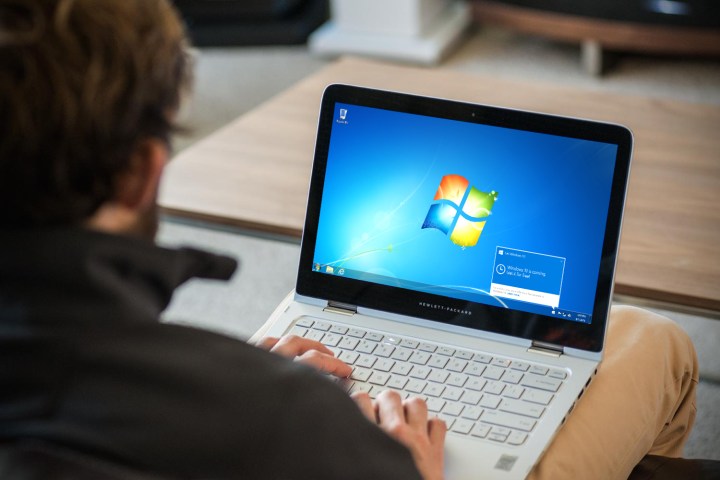
While Microsoft is addressing some other complaints about Windows 10 in the upcoming Creators Update — such as privacy concerns over the data that’s being transmitted and issues regarding how the operating system updates itself — the company seems intent on retaining Windows 10’s advertising functionality. In fact, it has apparently been adding OneDrive commercials to File Explorer, ExtremeTech reports.
Basically, you might start seeing a new promotion for OneDrive when you’re perusing your file structure in Windows 10. OneDrive is baked into Windows 10 and can’t easily be uninstalled, and Microsoft wants to make sure you know that the 5GB of free OneDrive storage can be easily upgraded to significantly more space.
Turning off the OneDrive advertising isn’t without consequences. You can go to the View menu in File Explorer, then Options, and select “Change folder and search options.” In the next window, select the View menu, then scroll down to and uncheck the “Show sync provider notifications” option. Note that while this should disable the OneDrive ads, it will also stop you from seeing potentially important notifications from OneDrive.

If you’re persuaded by the ads and want to get some additional OneDrive storage space, then perhaps the most cost-effective option is to sign up for an Office 365 Personal subscription. That gives you up to 1TB of OneDrive space for one PC, along with the desktop version of Microsoft’s Office productivity suite, for $70 a year. If you splurge for Office 365 Home, then $100 will nab you the same deal for five PCs, each of which will enjoy the same 1TB of OneDrive storage.
These OneDrive ads apparently aren’t new, but they seem to be showing up more often for more people. If you see the ad, you can simply dismiss it by clicking “Not now.” It might show up again, however, and we’re not sure if the ads will end just because you upgrade your OneDrive storage.
Editors' Recommendations
- Windows 11 vs. Windows 10: finally time to upgrade?
- Microsoft admits defeat on its controversial OneDrive change
- Windows 11 might pull ahead of Windows 10 in one key way
- Is Windows 11 a success so far? New report reveals how many PCs have upgraded
- Microsoft recommends you turn on this important Windows 11 security feature



